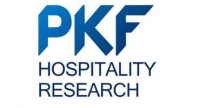 |
PKF Hospitality Research : One Night Stands Are Expensive
|
Category: Worldwide - Industry economy
- Figures / Studies
This is a press release selected by our editorial committee and published online for free on wednesday 20 july 2011
By Robert Mandelbaum
On paper, the formula for success at an extended-stay hotel is very sound. By accommodating guests for an extended period of time, these properties are able to “cover up” the soft spots on their calendars and achieve extraordinary annual levels of occupancy. In addition, the combination of limited services and amenities leads to increased employee productivity and high profit margins.
As PKF Hospitality Research (PKF-HR) has noted in previous analyses, niche lodging products will achieve their intended market penetration and operating premiums during periods of economic prosperity, but are susceptible to derailment during times of stress. Extended-stay hotels are extremely dependent on multiple night stays to achieve their market positioning and operating efficiencies. What happens to these properties during an economic recession when relocations, multi-week trainings sessions, and large installation projects all get cut from corporate budgets?
From its Trends® in the Hotel Industry database, PKF-HR analyzed the operating statements of 437 extended-stay hotels during the period 2006 through 2010 (estimated), the deepest industry recession on record. The research sample consisted of two groups; upper-tier (e.g. Residence Inn, Homewood Suites) and middle-tier (e.g. TownePlace Suites, Candlewood Suites). Lower-tier extended-stay properties (e.g. Homestead Studio Suites, Extended-Stay America) were excluded for confidentiality reasons. Comparisons were made to the aggregate performance of all property types in our Trends® survey.
The Top Line
All property types suffered declines in performance during the recent recession, including extended-stay hotels. However, on a relative basis, our sample of extended-stay properties achieved slightly less of a decline in RevPAR compared to the aggregate performance of all hotels in the Trends® survey. From 2007 to 2009, RevPAR for the extended-stay properties fell a cumulative 18.5 percent. This is less than the 19.5 percent decline experienced by the all hotel sample during the same period.
On a comparative basis, the extended-stay sample suffered a greater decline in occupancy during the two year period, but less of a fall off in ADR compared to the overall Trends® sample. Frequently during industry recessions, extended-stay hotels solicit transient demand more aggressively. This will lower occupancy levels, but helps to bolster ADR.
Expenses
While greater levels of transient demand may have a positive impact on revenue, it does have a negative impact on the operating efficiencies of extended-stay hotels. With fewer check-ins and check-outs, extended-stay properties are usually able to reduce their housekeeping and front desk staffs. Accordingly, labors costs measured as a percent of total revenue typically run 10 to 12 percentage points less at extended-stay properties compared to industry wide averages.
Despite a greater percentage decline in occupied rooms, extended-stay operators were not able to cut their labor costs as much as their counterparts at other property types. On average, salaries, wages, and employee benefits were reduced 10.0 percent for the entire Trends® sample from 2007 to 2009, but only 8.1 percent at the extended-stay properties. Managers at the properties in our extended-stay sample were able to cut their overall operating expenses by 7.1 percent from 2007 to 2009, but this pales in comparison to the 12.0 percent cost reductions achieved on average by all hotel operators.
The Bottom Line
Primarily attributable to the lower labor cost ratios, as well as the lack of retail food and beverage outlets and public space, extended-stay hotels achieve profit margins far superior to the 26.3 percent average for all hotels in the Trends® sample. During the four year study period, extended-stay hotels averaged a profit margin of 39.4 percent. The middle-tier extended-stay properties, with relatively fewer amenities and services, achieved a remarkable 42.6 percent average profit margin, while the upper-tier facilities brought a very respectable 38.9 percent of their revenues to the bottom line.
Fortunately for extended-stay hotel managers, the relative ability to maintain RevPAR appears to have offset the inability to cut costs. From 2007 to 2009, net operating income1 declined 33.7 percent on average for the properties in the extended-stay sample. This is less than the 37.9 percent drop in profits for overall Trends® sample.
As we head up the recovery phase of the lodging cycle and into a more prosperous period, expect the tried and true formula for extended-stay hotel success to reap even greater benefits.
Robert Mandelbaum is the Director of Research Information Services for PKF Hospitality Research. He is located in the firm’s Atlanta office.
|
|






